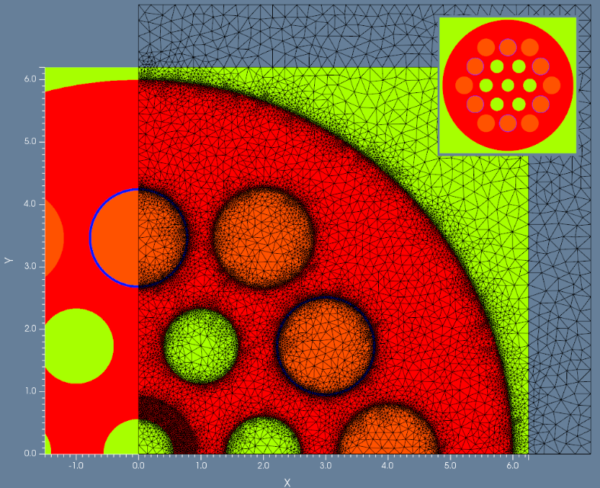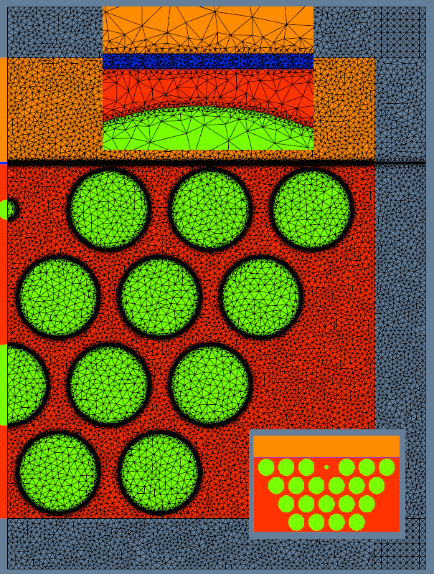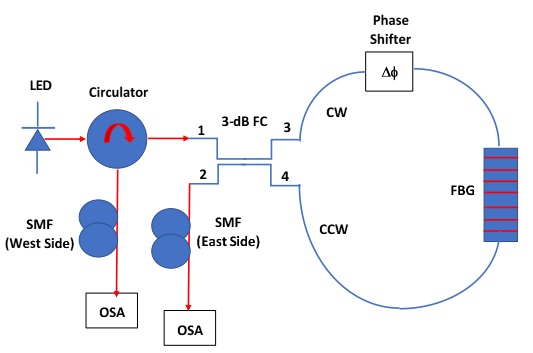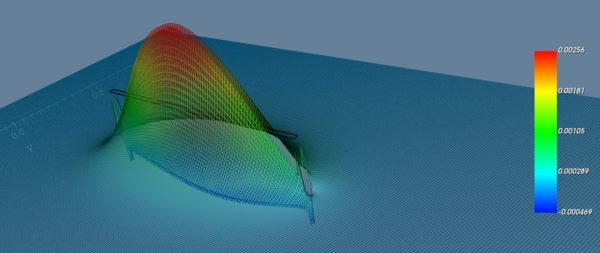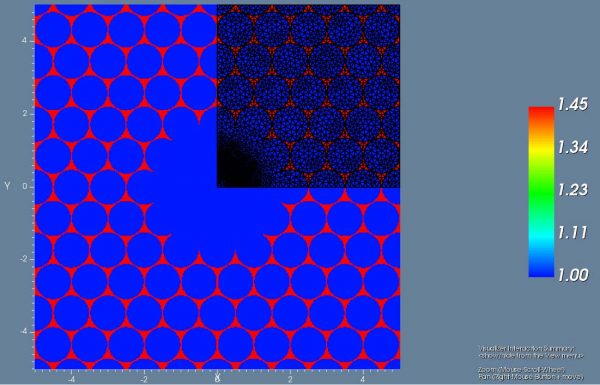- Applications
Applications
Optiwave software can be used in different industries and applications, including Fiber Optic Communication, Sensing, Pharma/Bio, Military & Satcom, Test & Measurement, Fundamental Research, Solar Panels, Components / Devices, etc..
Stay up-to-date with the latest updates
- Products
Products
- OptiSystem
- OptiInstrument
- OptiSPICE
- OptiFDTD
- OptiBPM
- OptiFiber
- OptiGrating
- OptiConverge
OptiSystemOptiSystem is a comprehensive software design suite that enables users to plan, test, and simulate optical links in the transmission layer of modern optical networks.
OptiInstrumentOptiInstrument addresses the needs of researchers, scientists, photonic engineers, professors and students who are working with instruments.
OptiSPICEOptiSPICE is the first circuit design software for analysis of integrated circuits including interactions of optical and electronic components. It allows for the design and simulation of opto-electronic circuits at the transistor level, from laser drivers to transimpedance amplifiers, optical interconnects and electronic equalizers.
OptiFDTDOptiFDTD is a powerful, highly integrated, and user friendly CAD environment that enables the design and simulation of advanced passive and non-linear photonic components.
OptiBPMOptiBPM is a comprehensive CAD environment used for the design of complex optical waveguides. Perform guiding, coupling, switching, splitting, multiplexing, and demultiplexing of optical signals in photonic devices.
OptiFiberOptiFiber The optimal design of a given optical communication system depends directly on the choice of fiber parameters. OptiFiber uses numerical mode solvers and other models specialized to fibers for calculating dispersion, losses, birefringence, and PMD.OptiGratingEmerging as a de facto standard over the last decade, OptiGrating has delivered powerful and user friendly design software for modeling integrated and fiber optic devices that incorporate optical gratings.
OptiConvergeOptiConverge is a collaborative integration framework that seamlessly combines two or more Optiwave products (e.g., OptiSystem, OptiSPICE, OptiFDTD, etc.) and other third party products into unified solutions. Designed to streamline complex workflows, it empowers users to achieve their goals faster by harnessing the collective power of our trusted Optiwave tools.- OptiSystem-Luceda
- OptiSPICE-Tanner
- OptiSystem-GDSFactory
- OptiSystem-FDTD/BPM
- OptiSystem-Tanner
- OptiSystem-OptiSPICE
- OptiSPICE-FDTD/BPM
- OptiSystem with other tools
Learn more about our products
- Downloads
Downloads
Download our 30-day Free Evaluations, lab assignments, and other freeware here.
Learn more about our 30-Day Evaluations
- Support
Support
Ask a questions

Want to learn more?
- Forum Login
- Applications
Applications
Optiwave software can be used in different industries and applications, including Fiber Optic Communication, Sensing, Pharma/Bio, Military & Satcom, Test & Measurement, Fundamental Research, Solar Panels, Components / Devices, etc..
Stay up-to-date with the latest updates
- Products
Products
- OptiSystem
- OptiInstrument
- OptiSPICE
- OptiFDTD
- OptiBPM
- OptiFiber
- OptiGrating
- OptiConverge
OptiSystemOptiSystem is a comprehensive software design suite that enables users to plan, test, and simulate optical links in the transmission layer of modern optical networks.
OptiInstrumentOptiInstrument addresses the needs of researchers, scientists, photonic engineers, professors and students who are working with instruments.
OptiSPICEOptiSPICE is the first circuit design software for analysis of integrated circuits including interactions of optical and electronic components. It allows for the design and simulation of opto-electronic circuits at the transistor level, from laser drivers to transimpedance amplifiers, optical interconnects and electronic equalizers.
OptiFDTDOptiFDTD is a powerful, highly integrated, and user friendly CAD environment that enables the design and simulation of advanced passive and non-linear photonic components.
OptiBPMOptiBPM is a comprehensive CAD environment used for the design of complex optical waveguides. Perform guiding, coupling, switching, splitting, multiplexing, and demultiplexing of optical signals in photonic devices.
OptiFiberOptiFiber The optimal design of a given optical communication system depends directly on the choice of fiber parameters. OptiFiber uses numerical mode solvers and other models specialized to fibers for calculating dispersion, losses, birefringence, and PMD.OptiGratingEmerging as a de facto standard over the last decade, OptiGrating has delivered powerful and user friendly design software for modeling integrated and fiber optic devices that incorporate optical gratings.
OptiConvergeOptiConverge is a collaborative integration framework that seamlessly combines two or more Optiwave products (e.g., OptiSystem, OptiSPICE, OptiFDTD, etc.) and other third party products into unified solutions. Designed to streamline complex workflows, it empowers users to achieve their goals faster by harnessing the collective power of our trusted Optiwave tools.- OptiSystem-Luceda
- OptiSPICE-Tanner
- OptiSystem-GDSFactory
- OptiSystem-FDTD/BPM
- OptiSystem-Tanner
- OptiSystem-OptiSPICE
- OptiSPICE-FDTD/BPM
- OptiSystem with other tools
Learn more about our products
- Downloads
Downloads
Download our 30-day Free Evaluations, lab assignments, and other freeware here.
Learn more about our 30-Day Evaluations
- Support
Support
Ask a questions

Want to learn more?
- Forum Login
Accurate Sensing Software
Sensor technologies are a rapidly growing topic in science and product design, embracing electronics, photonics, mechanics, chemistry, and biology developments.
The presence of optical fiber sensing, including sound, movement, optical, or magnetic signals, is widespread in everyday life. The demand for portable and lightweight sensors is relentless, filling various needs in consumer electronics, biomedical engineering, and military applications.
Create Better Sensors with Optiwave
Optiwave’s applications can be used to design and simulate state-of-the-art optical sensors for a range of industries, from electronics to healthcare. For example, programs like OptiMode can simulate photonic crystal fiber sensors, which, in turn, can be used to create temperature sensors. Similarly, this application also supports the simulation of complex fiber Bragg grating sensors for strain sensing.
Below, you’ll find all the resources you need to learn more about optical fiber sensor applications with Optiwave. Our archive covers step-by-step tutorials, quick design basics for mirror sensors, and exciting ideas to help you get started with your testing.
FAQs
What can optical sensing be used for?
Sensing can be used for practically most real-world applications. For instance, biochemical sensors can be used to monitor the interaction of light with chemical molecules, and they’re often used in healthcare. Programs like OptiBPM were built from the ground up to facilitate the simulation and design of highly efficient sensors, and they can be used to simulate the passage of light in highly complex situations.
Can I use optical fiber sensing applications as a beginner?
Optiwave’s products are intuitive and designed to be used by a wide range of people. Whether you’re a budding researcher or an experienced scientist, you can benefit from our cutting-edge optical fiber simulation software. If you’d like to see it for yourself, start a free 30-day evaluation today or contact one of our experts!
How can I learn more about optical sensors?
We offer an extensive repository of helpful information for both beginners and experts. You can check out our base of documentation to find detailed guides for sensors or head over to our webinar section to get an interactive look at everything that’s possible with Optiwave.

